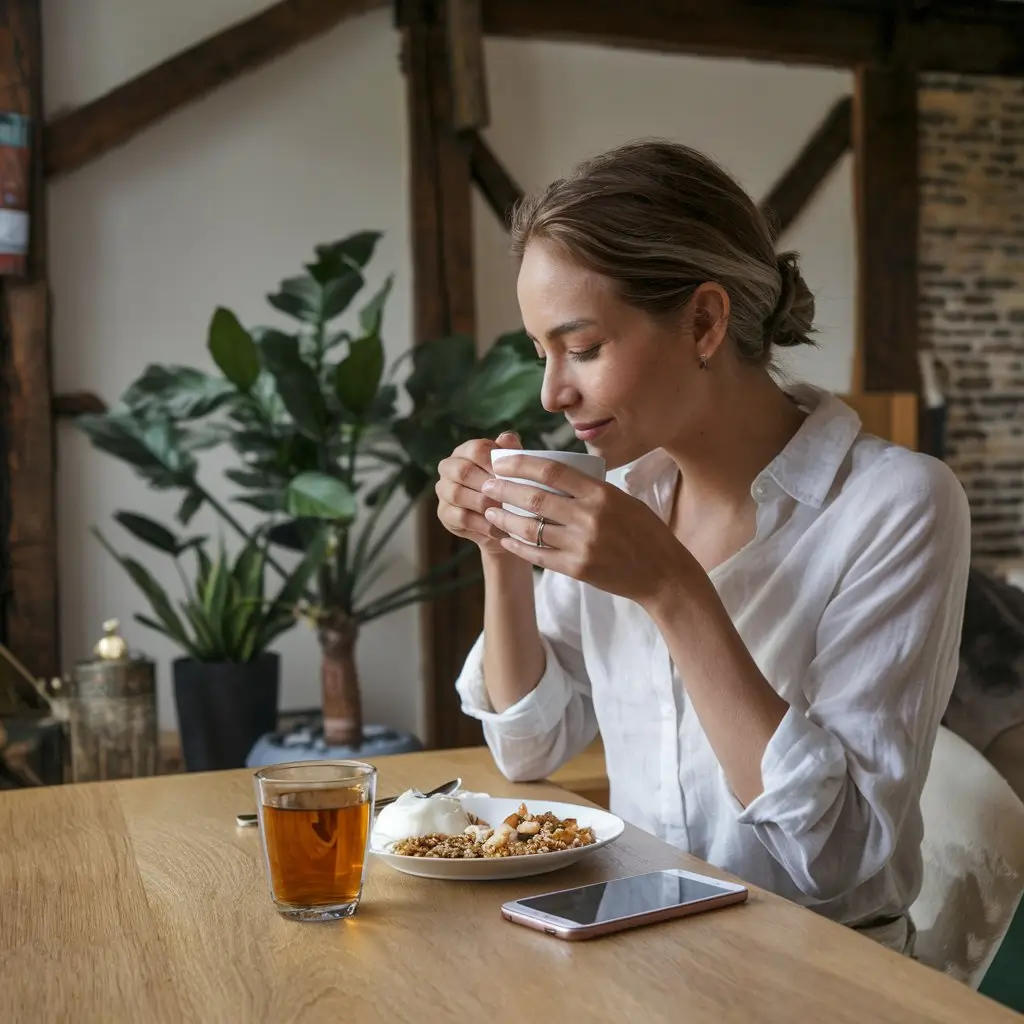Apathy, often described as a lack of interest, enthusiasm, or concern, is a pervasive issue that can significantly impact daily life. Understanding apathy is crucial, as it can affect mental health, relationships, and overall well-being. This article explores the definition of apathy, its causes, the consequences it has on individuals, and strategies to overcome it.
Understanding Apathy
Apathy is a psychological condition characterized by a profound lack of interest, enthusiasm, or concern about various aspects of life. While it may seem like a simple emotional state, apathy can have complex underpinnings and significant implications for individuals.
Explanation of Apathy as a Psychological Concept
Apathy is often viewed as a symptom rather than a standalone disorder. It can manifest in various ways, such as emotional detachment, a diminished ability to act or respond, and a general disinterest in activities that once brought joy or fulfillment. This emotional state can arise from a range of factors, including mental health disorders, stress, and environmental influences.
In psychological terms, apathy is frequently associated with conditions like depression and schizophrenia. For instance, individuals with depression may experience pervasive feelings of hopelessness that lead to apathy, making it challenging to engage with daily life. In schizophrenia, apathy can be a core symptom, impacting motivation and social functioning.
Differentiation Between Apathy, Laziness, and Depression
It’s essential to differentiate this emotional state from related concepts like laziness and depression. While laziness is often viewed as a choice to avoid tasks, this condition is not rooted in willfulness; rather, it is an involuntary emotional response. People experiencing this numbness may genuinely want to care or engage but find themselves unable to do so due to emotional detachment or overwhelming feelings.
Depression, on the other hand, encompasses a broader range of symptoms, including persistent sadness, fatigue, and feelings of worthlessness. The emotional detachment can be a significant aspect of depression, but it does not encompass the full spectrum of depressive symptoms. The proper identification of patient health conditions requires knowledge about these differences to deliver appropriate medical diagnostic and treatment plans.
Common Misconceptions About Apathy
Misconceptions about apathy can lead to stigmatization and misunderstanding. Many people equate apathy with a lack of ambition or character flaws, assuming that individuals who experience apathy are simply not trying hard enough. This perception can create barriers to seeking help, as individuals may feel ashamed or judged for their emotional state.
Additionally, apathy is sometimes mistaken for indifference or lack of empathy. In reality, individuals experiencing apathy may still care deeply about issues or people but find themselves unable to express or act on those feelings. This emotional disconnection can lead to misunderstandings in relationships, as loved ones may interpret apathy as a lack of concern.
Understanding apathy in its multifaceted nature is crucial for addressing it effectively. By recognizing that apathy is a complex psychological state influenced by various factors, rather than a simple failure to engage, individuals and mental health professionals can work together to develop strategies for overcoming it. This understanding lays the groundwork for exploring the causes and consequences of apathy in daily life, ultimately leading to more compassionate and effective support for those affected.
Causes of Apathy
Apathy is a multifaceted condition influenced by various interconnected factors. Understanding these causes is essential for addressing apathy effectively and developing appropriate interventions. The causes of apathy can be broadly categorized into psychological, biological, environmental, and lifestyle factors.
Psychological Factors
- Depression and Anxiety:
Depression is one of the most significant psychological contributors to apathy. Individuals with depression often experience overwhelming feelings of sadness, hopelessness, and fatigue, which can lead to a disinterest in previously enjoyable activities. Similarly, anxiety can create a state of constant worry and fear, draining emotional energy and making it difficult to engage in daily life. The mental fatigue caused by these disorders can result in a profound lack of motivation. - Stress and Burnout:
Chronic stress, whether from work, relationships, or life circumstances, can lead to emotional exhaustion. When individuals face prolonged periods of stress, they may enter a state of burnout characterized by emotional detachment and a sense of helplessness. This burnout can manifest as apathy, where individuals feel overwhelmed and unable to muster the energy to engage in their lives.
Biological Factors
- Neurotransmitter Imbalances:
Neurotransmitters are chemical messengers in the brain that play a crucial role in regulating mood and motivation. Apathy is often linked to imbalances in neurotransmitters, particularly dopamine, serotonin, and norepinephrine. Low levels of dopamine, which is associated with feelings of pleasure and reward, can result in a diminished capacity to experience joy and motivation, leading to apathy. - Medical Conditions:
Certain medical conditions can also contribute to apathy. Neurological disorders such as Parkinson’s disease, Alzheimer’s disease, and multiple sclerosis often feature apathy as a symptom. These conditions can affect brain function and impair the ability to feel motivated or engaged. Additionally, chronic illnesses, such as cancer or heart disease, can lead to fatigue and emotional numbness, further contributing to apathetic feelings.
Environmental Factors
- Social Isolation and Loneliness:
Human beings are inherently social creatures, and meaningful connections are vital for emotional well-being. Social isolation and loneliness can significantly contribute to feelings of apathy. When individuals lack social support or meaningful relationships, they may feel disconnected from the world around them, leading to a sense of indifference and emotional detachment. - Lack of Stimulation or Boredom:
Environments that lack stimulation, whether due to monotony, routine, or insufficient challenges, can lead to feelings of boredom and disengagement. Individuals who do not feel challenged or stimulated by their surroundings may lose interest in activities, leading to a cycle of apathy.
Lifestyle Factors
- Poor Diet and Lack of Exercise:
Nutrition and physical activity play critical roles in mental health. Diets high in processed foods and low in essential nutrients can negatively impact mood and energy levels. Similarly, a sedentary lifestyle can lead to feelings of lethargy and disconnection from one’s body, contributing to apathy. - Substance Abuse:
The misuse of substances, such as alcohol and drugs, can significantly affect mental health and motivation. Substance abuse can lead to changes in brain chemistry, exacerbating feelings of apathy. Additionally, the consequences of substance abuse, such as relationship issues and health problems, can further contribute to emotional numbness..
Consequences of Apathy in Daily Life
Emotional detachment can have profound and far-reaching consequences that affect various aspects of an individual’s life. Understanding these effects is essential for recognizing the urgency of addressing this issue and its underlying causes. The impact can be categorized into several key areas: mental health, relationships, work and productivity, and physical well-being.
Impact on Mental Health
- Worsening of Existing Mental Health Conditions:
Apathy is often a symptom of underlying mental health issues such as depression and anxiety. When left unaddressed, apathy can exacerbate these conditions, leading to a downward spiral of emotional distress. Individuals may find it increasingly challenging to cope, resulting in a cycle of disengagement and worsening mental health. - Development of New Psychological Issues:
Prolonged apathy can also lead to the emergence of new psychological issues. As individuals withdraw from life and fail to engage with their emotions, they may experience feelings of guilt, shame, or self-loathing. This emotional turmoil can pave the way for conditions such as social anxiety, chronic stress, or even more severe mood disorders.

Effects on Relationships
- Strain on Personal Relationships:
Apathy can create significant strain in relationships with family, friends, and partners. When an individual is emotionally detached, their loved ones may feel rejected or ignored, leading to frustration and resentment. The inability to connect on an emotional level can erode trust and intimacy, resulting in further isolation for the person experiencing apathy. - Isolation and Withdrawal from Social Interactions:
Apathy often leads individuals to withdraw from social activities and engagements. This withdrawal can result in feelings of loneliness and isolation, both for the individual and their loved ones. As connections with others diminish, the individual may find it increasingly difficult to re-engage, creating a self-perpetuating cycle of disconnection.
Implications for Work and Productivity
- Decreased Motivation and Performance:
In the workplace, apathy can manifest as a lack of motivation to complete tasks, meet deadlines, or contribute to team projects. Employees may find themselves disengaged and unproductive, impacting overall performance and team dynamics. This lack of engagement can lead to missed opportunities for growth or advancement. - Increased Absenteeism and Disengagement:
Apathy can result in increased absenteeism, as individuals may feel overwhelmed or unmotivated to attend work or fulfill responsibilities. This disengagement can affect not only the individual but also their colleagues, leading to increased workloads and stress within the team. Over time, this can create a toxic work environment, further perpetuating feelings of apathy.
Influence on Physical Health
- Neglect of Self-Care and Health Issues:
Apathy can lead to a neglect of self-care routines, including regular exercise, healthy eating, and medical check-ups. Individuals may become indifferent to their physical health, resulting in weight gain, fatigue, or the exacerbation of existing health conditions. This neglect can create a vicious cycle, where poor physical health further contributes to emotional detachment. - Correlation with Chronic Diseases:
Research has shown that apathy is often linked to the development and progression of chronic diseases. Conditions such as heart disease, diabetes, and obesity can be exacerbated by the lack of motivation to maintain a healthy lifestyle. Additionally, the emotional toll of chronic illness can create feelings of helplessness, further deepening the individual’s apathy.
Recognizing Apathy in Yourself and Others
Recognizing apathy is a crucial step toward addressing it effectively. Awareness of the signs and symptoms can help individuals, as well as their friends and family, identify when apathy is impacting their lives. This section explores the key indicators of apathy, tools for self-assessment, and the importance of open communication about emotional health.
Signs and Symptoms of Apathy
- Emotional Detachment:
One of the most significant signs of apathy is a sense of emotional detachment. Individuals may feel disconnected from their feelings or experience a lack of emotional response to situations that would typically elicit a reaction. This can manifest as indifference toward personal relationships, hobbies, or even significant life events. - Disinterest in Activities:
Apathy often leads to a marked disinterest in activities that were once enjoyable or fulfilling. Individuals may find it challenging to engage in hobbies, social events, or even daily responsibilities. This disinterest can create a cycle where the absence of engagement further deepens feelings of apathy. - Lack of Motivation:
A pervasive lack of motivation is a hallmark of apathy. Individuals may struggle to initiate or complete tasks, regardless of their importance. This can range from neglecting household chores to a diminished desire to pursue career goals or personal interests. - Social Withdrawal:
Apathy frequently leads to social withdrawal. Individuals may avoid social gatherings, decline invitations, or isolate themselves from friends and family. This withdrawal can exacerbate feelings of loneliness and create barriers to re-engagement. - Cognitive Impairment:
In some cases, apathy can be associated with cognitive impairment, such as difficulty concentrating, making decisions, or remembering tasks. This cognitive fog can hinder an individual’s ability to function effectively in daily life.
Self-Assessment Tools and Questionnaires
- Self-Reflection:
Engaging in self-reflection can be an effective way to gauge one’s emotional state. Individuals can take time to consider their feelings, interests, and motivations. Journaling or maintaining a mood diary can help track changes over time and identify patterns of apathy. - Standardized Questionnaires:
Several standardized questionnaires and self-assessment tools can provide insights into one’s emotional health. Tools like the Beck Depression Inventory or the Apathy Evaluation Scale can help individuals assess their level of apathy and identify areas for improvement. These assessments can also be beneficial for discussions with mental health professionals. - Seeking Feedback from Others:
Sometimes, friends and family may notice signs of apathy that the individual may overlook. Openly seeking feedback from trusted loved ones can provide valuable insights into one’s emotional state and behaviors.
Encouraging Open Discussions About Feelings of Apathy
- Creating a Safe Space:
Encouraging open discussions about apathy and related feelings requires creating a safe and supportive environment. Individuals should feel comfortable sharing their thoughts without fear of judgment or misunderstanding. This can foster connection and help reduce the stigma surrounding apathy and mental health concerns. - Active Listening:
When discussing feelings of apathy, active listening is crucial. Friends and family should practice empathetic listening, allowing individuals to express their emotions and concerns fully. The validation process enables people to experience understanding and creates a strong bond between participants. - Normalizing Conversations About Mental Health:
Normalizing conversations about mental health can help reduce the stigma associated with apathy. By discussing emotional well-being openly and regularly, individuals may feel more empowered to seek help or share their experiences without fear.
Strategies to Overcome Apathy
A cure for apathy requires simultaneous action to eliminate its bases while fostering connection to life’s activities. Individuals can implement various strategies to combat feelings of indifference and rekindle motivation. This section outlines effective methods, including seeking professional help, making lifestyle changes, practicing mindfulness and self-care, and building a structured routine.

Seeking Professional Help
- Therapy Options:
Engaging with a mental health professional can provide valuable support in overcoming apathy. Cognitive-behavioral therapy (CBT) is particularly effective, as it helps individuals identify and challenge negative thought patterns that contribute to apathy. Therapists can work with clients to develop coping strategies, set achievable goals, and foster a sense of purpose. - Medication Considerations:
In some cases, medication may be necessary to address underlying mental health conditions that contribute to apathy, such as depression or anxiety. Antidepressants or mood stabilizers may help rebalance neurotransmitters in the brain, improving motivation and emotional engagement. It’s essential to consult a healthcare provider to determine the most appropriate treatment plan. - Support Groups:
Joining a support group can provide individuals with a sense of community and understanding. Sharing experiences with others who are facing similar challenges can be empowering and help reduce feelings of isolation. Support groups can be found through local mental health organizations, online platforms, or community centers.
Lifestyle Changes
- Incorporating Physical Activity:
Regular physical activity is one of the most effective ways to combat apathy. Exercise releases endorphins, which can improve mood and increase energy levels. Whether through walking, dancing, yoga, or team sports, finding an enjoyable form of exercise can reignite motivation and engagement in daily life. - Enhancing Social Interactions:
Actively seeking social connections can help combat feelings of isolation and disconnection. Individuals can reach out to friends or family members, join clubs or interest groups, or volunteer in their communities. Engaging in social activities can provide a sense of belonging and purpose, counteracting apathy. - Nourishing Your Body:
A balanced diet rich in nutrients supports overall mental and physical health. Consuming whole foods, such as fruits, vegetables, whole grains, and lean proteins, can enhance energy levels and emotional well-being. Drinking enough water alongside avoiding artificial and processed foods helps to control moods while improving motivation.
Mindfulness and Self-Care Practices
- Mindfulness Meditation:
Practicing mindfulness can help individuals reconnect with their emotions and cultivate a greater awareness of their thoughts and feelings. Mindfulness meditation involves focusing on the present moment without judgment, which can reduce stress and increase emotional regulation. Incorporating just a few minutes of mindfulness practice each day can lead to significant improvements in emotional well-being. - Journaling:
Journaling can be a powerful tool for self-reflection. Writing about thoughts, feelings, and experiences can provide clarity and insight into one’s emotional state. Journaling can also serve as a way to set goals and track progress, helping individuals recognize patterns and celebrate small victories. - Establishing a Self-Care Routine:
Developing a self-care routine that includes activities that bring joy and relaxation is essential. This might involve hobbies, reading, spending time in nature, or engaging in creative pursuits. Prioritizing self-care helps individuals reconnect with their interests and passions, counteracting feelings of apathy.
Building a Routine
- Establishing Daily Habits:
Developing a mapped-out daily plan enables you to create both reliability and consistency in life. Individuals can set specific times for activities, including work, exercise, meals, and leisure. Establishing these habits can create a sense of accomplishment and encourage engagement in daily life. - Setting Achievable Goals:
Breaking tasks into small, manageable goals can help individuals overcome feelings of being overwhelmed. Setting realistic and achievable objectives allows for a sense of accomplishment and motivation to tackle larger tasks.People can boost their progress through small victories which they should celebrate to create positive energy that promotes further growth. - Incorporating Variety:
Introducing variety into daily routines can help combat monotony and boredom, which often contribute to apathy. Trying new activities, exploring different hobbies, or changing up daily routines can reignite interest and motivation. This exploration can lead to discovering new passions and interests.
Conclusion
Understanding apathy is essential for improving mental health and overall well-being. By recognizing its causes and consequences, individuals can take proactive steps to address apathy in their lives. Fostering a supportive environment for those affected can lead to meaningful change and a renewed sense of engagement in life.




















